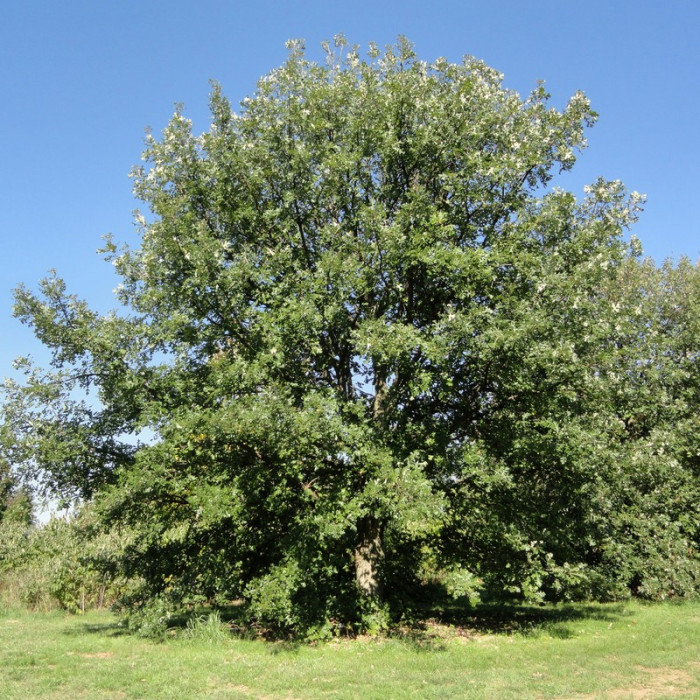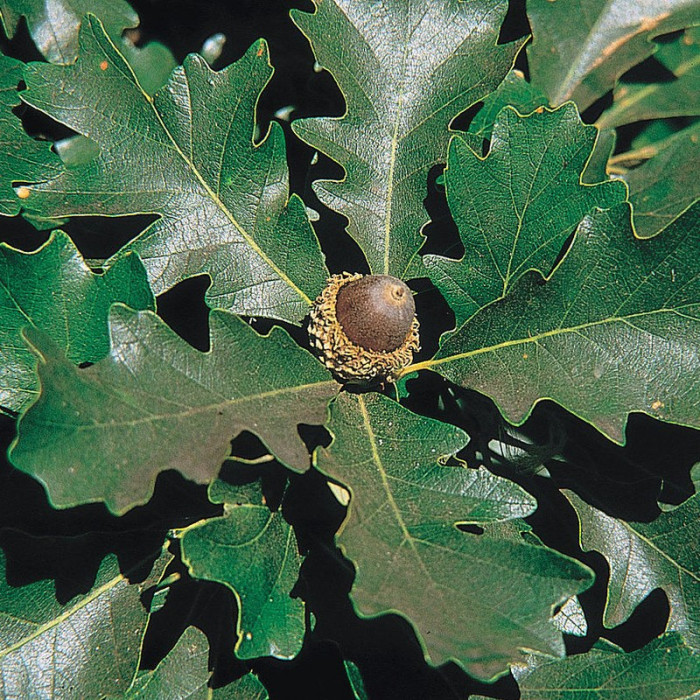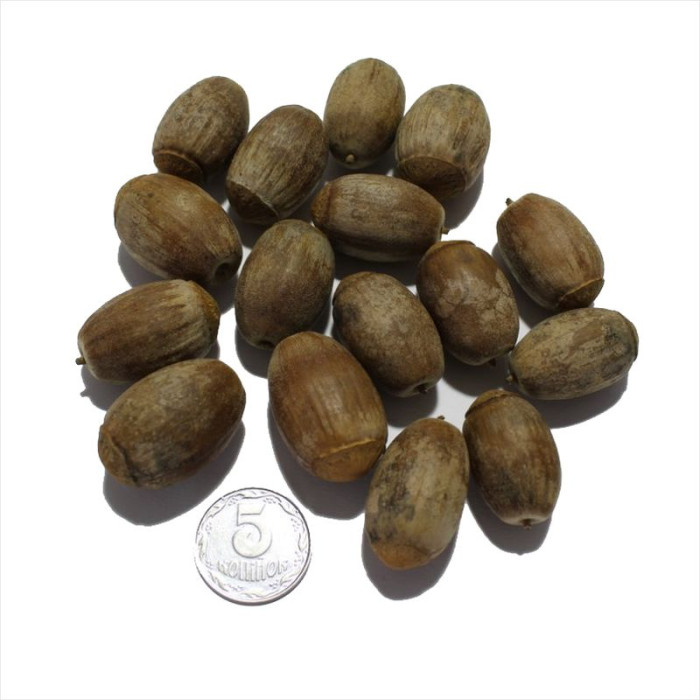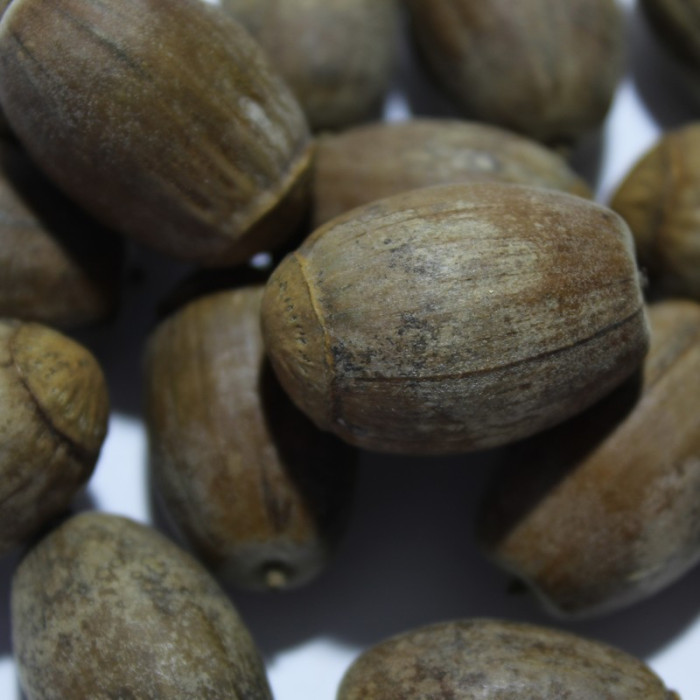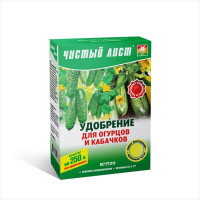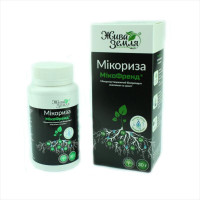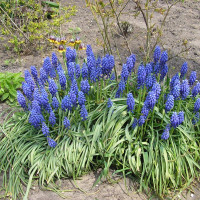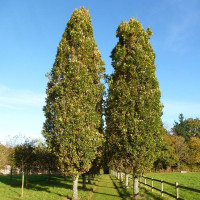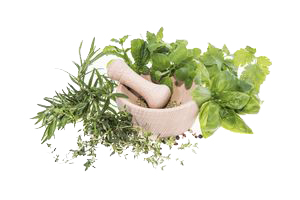Bur oak or burr oak / Quercus macrocarpa Michx. (and is also called mossycup oak, mossycup white oak, blue oak, or scrub oak.) - a majestic deciduous tree 25-50 m in height. The crown is tent-shaped, spreading, dense. The bark is light gray-brown, fissured and deeply furrowed, dissected into irregular plates. The branches are brownish. The shoots are yellow-orange, pubescent. Leaves are 10-30 (45) cm long and 5-16 cm wide, obovate or oblong-obovate, wedge-shaped and more or less tapered at the base, triangular or rounded at the petiole, with a short pointed, obtuse apex, very irregularly and deeply lobed, usually with 3-7 blunt lobes on each side of the leaf, lyre-shaped, the terminal lobe is much larger than the rest, shallowly three-lobed or notched, the remaining lobes are deeply dissected, glabrous above, dark green, light below, glaucous, white tomentose . In autumn, the leaves turn pale yellow or yellowish-brownish. Petioles up to 1,5 cm in length.
Acorns are 2,5-5 cm long, ovoid to semicircular, pointed, single, sometimes paired, thin-tomentose. The plus is covered with pressed scales, covering the acorn up to half or more of its length. The upper edge of the plus is fringed due to the upper, densely and randomly spread, needle-shaped scales.
It blooms simultaneously with the leaves blooming, in May. The fruits ripen in September. Grows quickly. Quite moisture-loving. Very resistant to urban conditions. Frost-resistant down to -40°C. In culture since 1811.

No questions about this product, be the first and ask your question.


